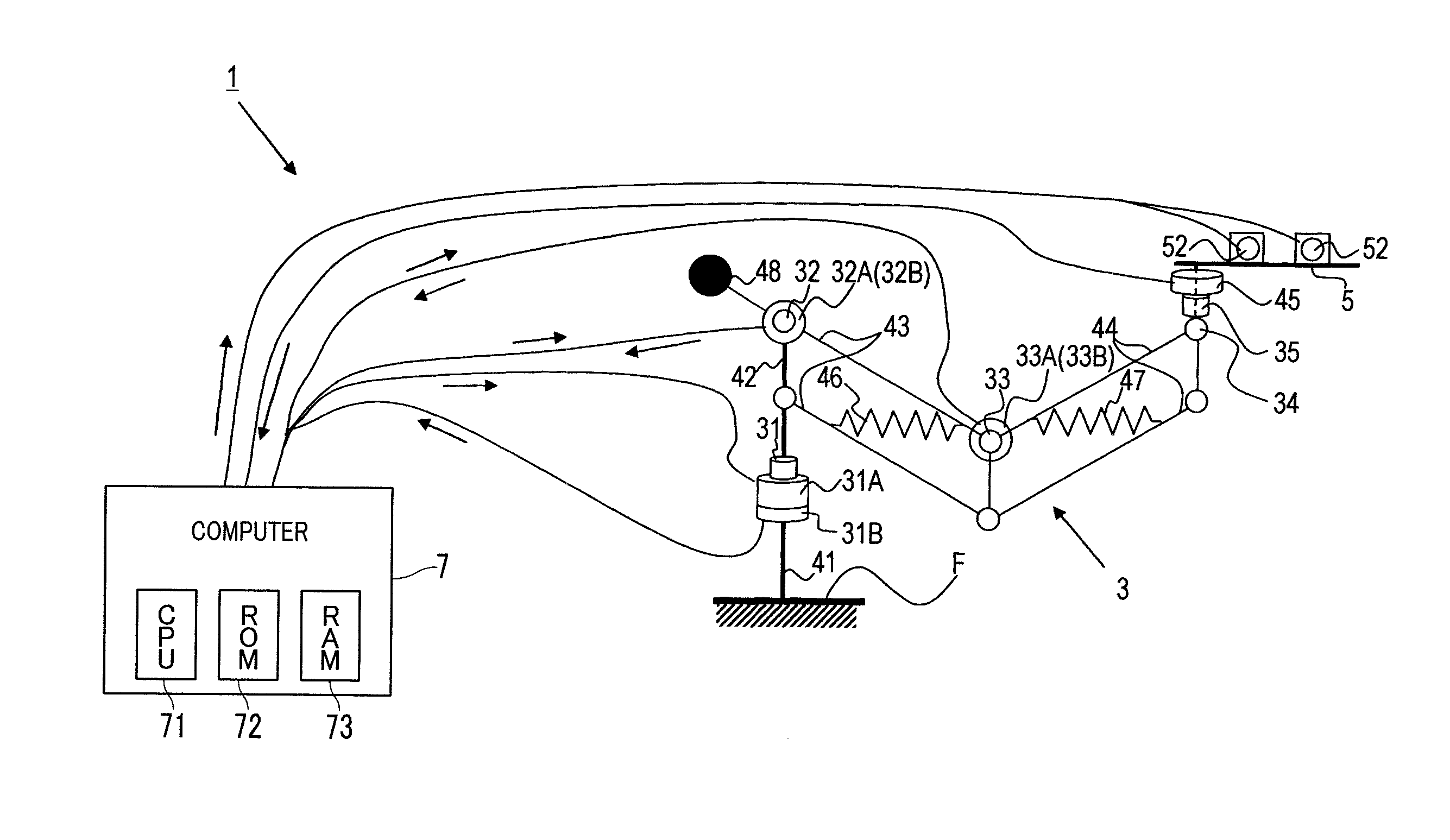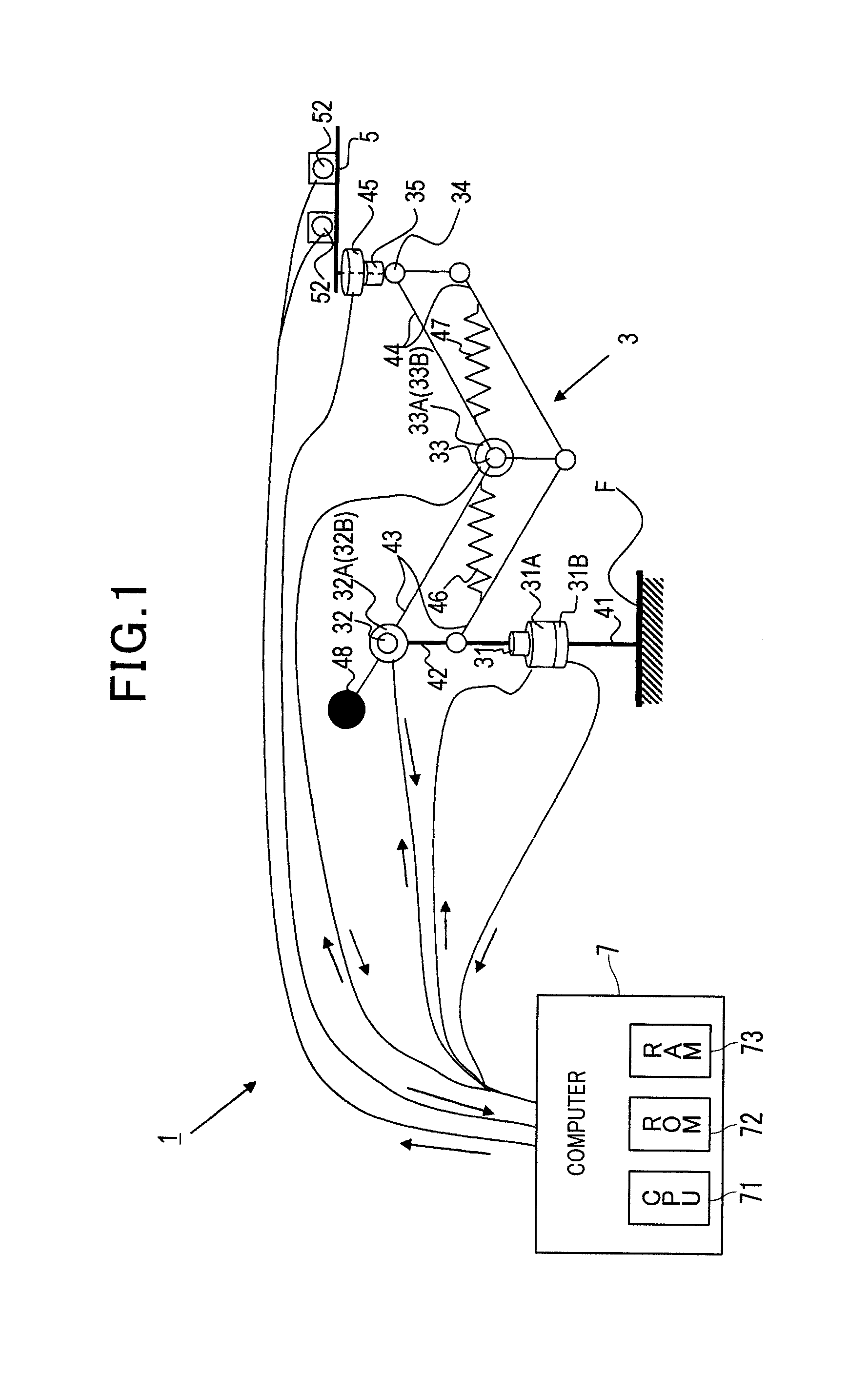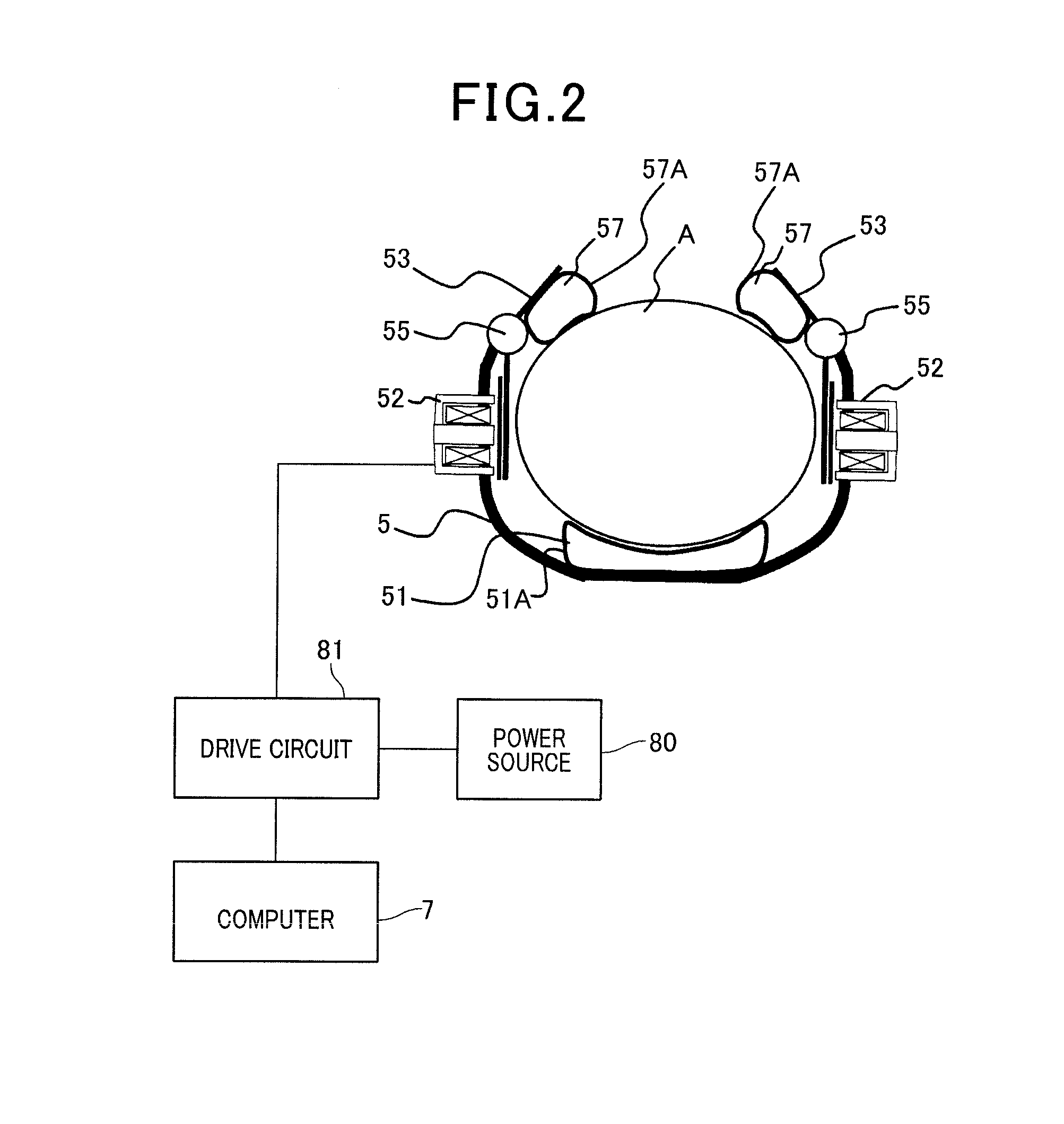Apparatus for supporting body part of worker
- Summary
- Abstract
- Description
- Claims
- Application Information
AI Technical Summary
Benefits of technology
Problems solved by technology
Method used
Image
Examples
first embodiment
[0032]With reference to FIGS. 1 to 4, a first embodiment of the body support apparatus will now be described.
[0033]FIG. 1 is a schematic diagram illustrating a body support apparatus 1 according to a first embodiment. As shown in FIG. 1, the body support apparatus 1 includes a multijoint arm 3 (acting as a support), an end arm 5 mounted to an end of the multijoint arm 3, and a computer 7 that determines a mode for controlling the multijoint arm 3 and the end arm 5. The multijoint arm 3 serves as a movement mechanism that movably supports the end arm 5 according to an external force acting on the end arm 5. The multijoint arm 3 is configured to have five joints 31, 32, 33, 34 and 35 so as to have five degrees of freedom. The joints 31 to 35 are all ensured to be rotatable.
[0034]The multijoint arm 3 is provided with a support 41 which is vertically fixed to a floor F (or a chair or a table for the surgery) of an operating room. The support 41 supports the entirety as explained below. ...
second embodiment
[0056]Referring now to FIGS. 5 to 7, hereinafter is described a body support apparatus 101 according to a second embodiment to which the present invention is applied. In the second and the subsequent embodiments, the components identical with or similar to those in the first embodiment are given the same reference numerals for the sake of omitting unnecessary explanation.
[0057]As shown in FIG. 5, the body support apparatus 101 of the present embodiment is different from the first embodiment in that the apparatus 101 has a configuration in which a foot switch 90 is connected to the computer 7 for determining a mode. Accordingly, the series of steps performed by the computer 7 will be as shown in FIG. 6. In the present embodiment, the foot switch 90 may be replaced by a different switch.
[0058]As shown in FIG. 6, similar to the first embodiment, at step S1, the operating mode is set to the wait mode. After that, at step S12, the computer 7 determines whether or not the foot switch 90 h...
third embodiment
[0066]Referring to FIGS. 8 and 9, hereinafter is described a third embodiment to which the present invention is applied. The present embodiment is different from the first embodiment in that the series of steps performed by the computer 7 in the body support apparatus 1, which is configured similar to the first embodiment, has been changed as shown in FIG. 8.
[0067]In the present embodiment, F3 indicates the threshold of a force applied to the end arm 5, the threshold being used for determining that the surgeon has supported his / her arm A with his / her own muscle. Further, F2 indicates the threshold of a force applied to the end arm 5, the threshold being used for determining that the surgeon has not placed his / her arm A on the end arm 5. Further, F1 indicates the threshold of a force applied to the end arm 5, the threshold being used for determining that the surgeon has attempted to permit the end arm 5 to follow the movement of the arm A. F1, F2 and F3 may desirably satisfy a relati...
PUM
 Login to View More
Login to View More Abstract
Description
Claims
Application Information
 Login to View More
Login to View More - R&D
- Intellectual Property
- Life Sciences
- Materials
- Tech Scout
- Unparalleled Data Quality
- Higher Quality Content
- 60% Fewer Hallucinations
Browse by: Latest US Patents, China's latest patents, Technical Efficacy Thesaurus, Application Domain, Technology Topic, Popular Technical Reports.
© 2025 PatSnap. All rights reserved.Legal|Privacy policy|Modern Slavery Act Transparency Statement|Sitemap|About US| Contact US: help@patsnap.com



